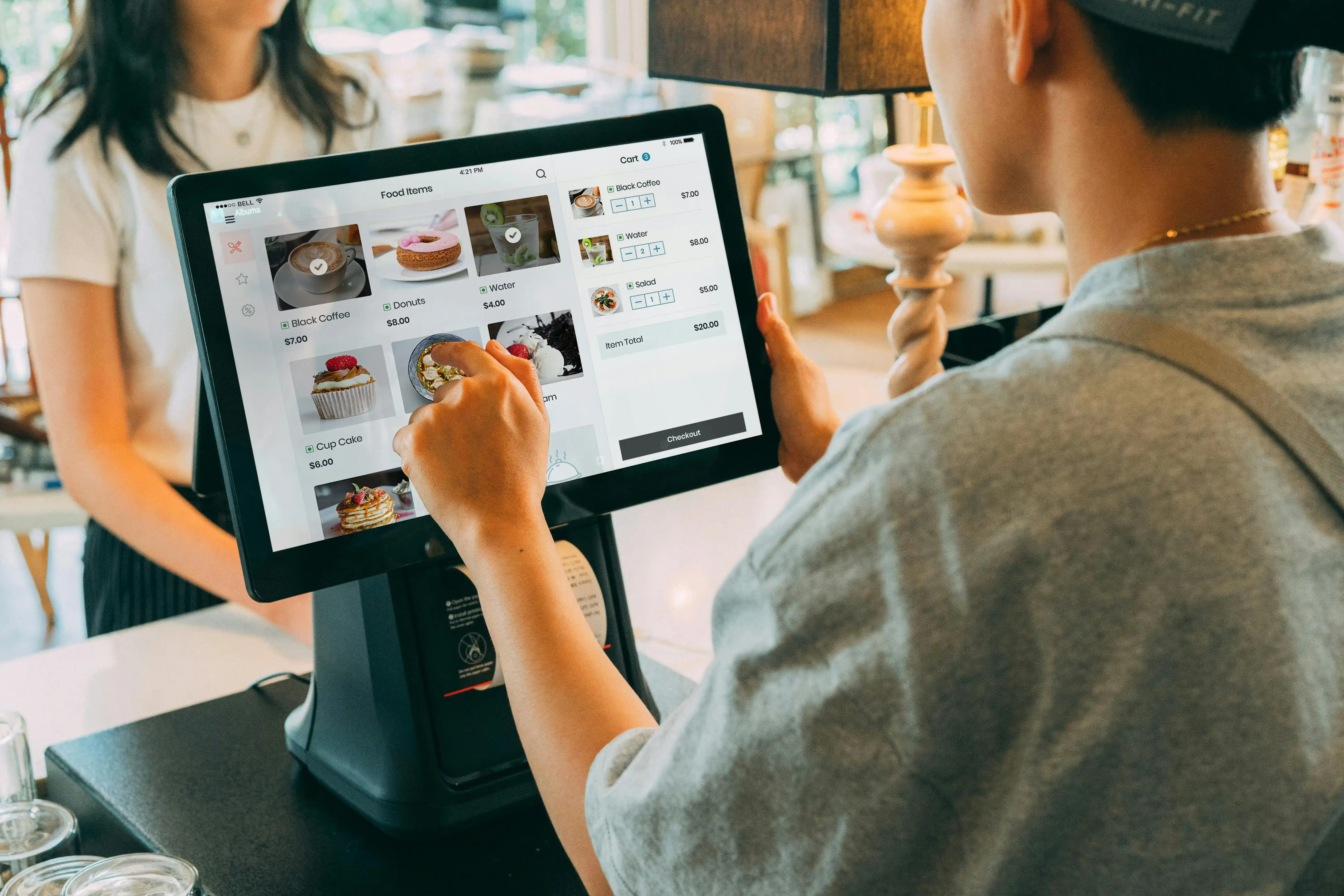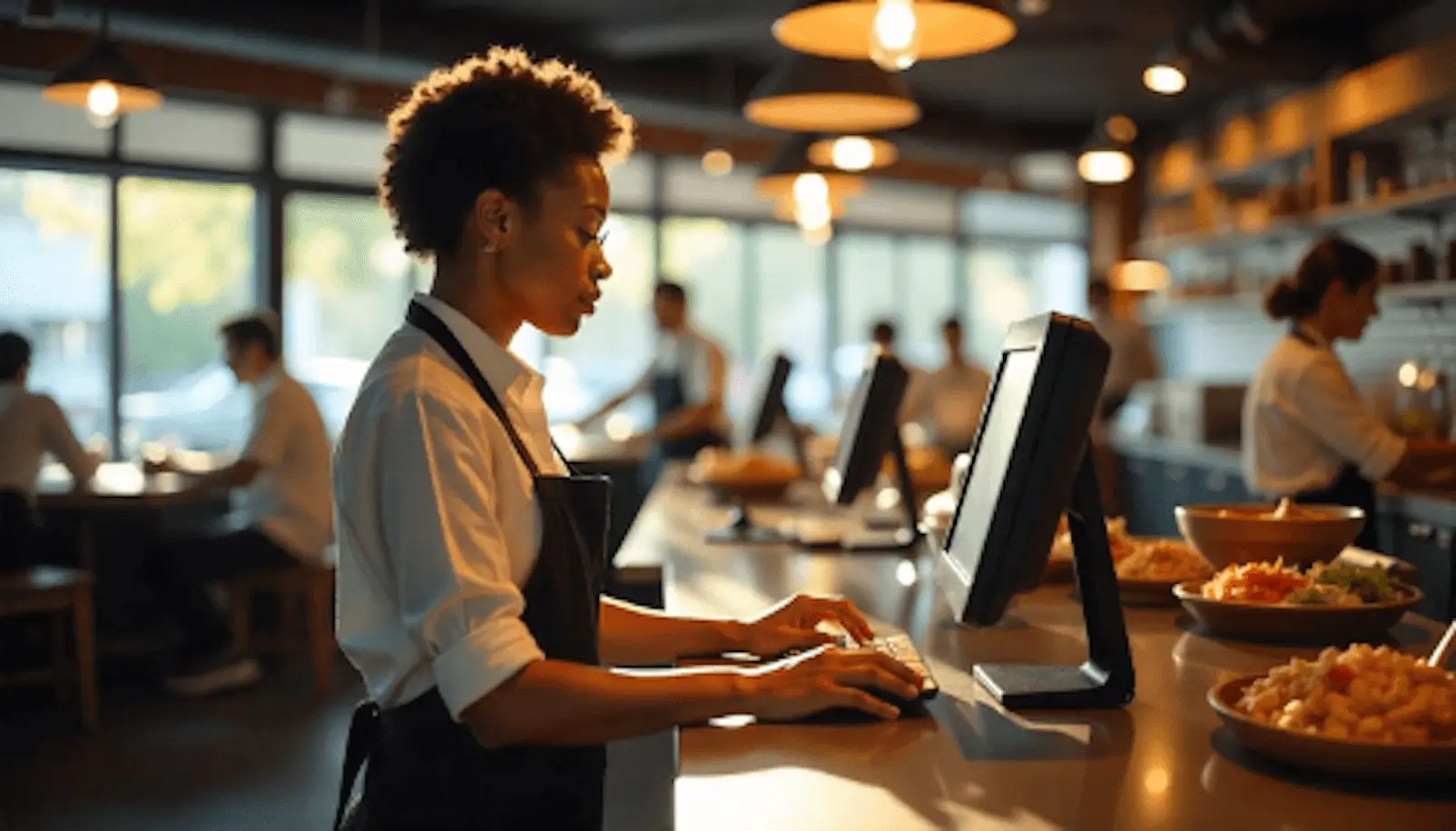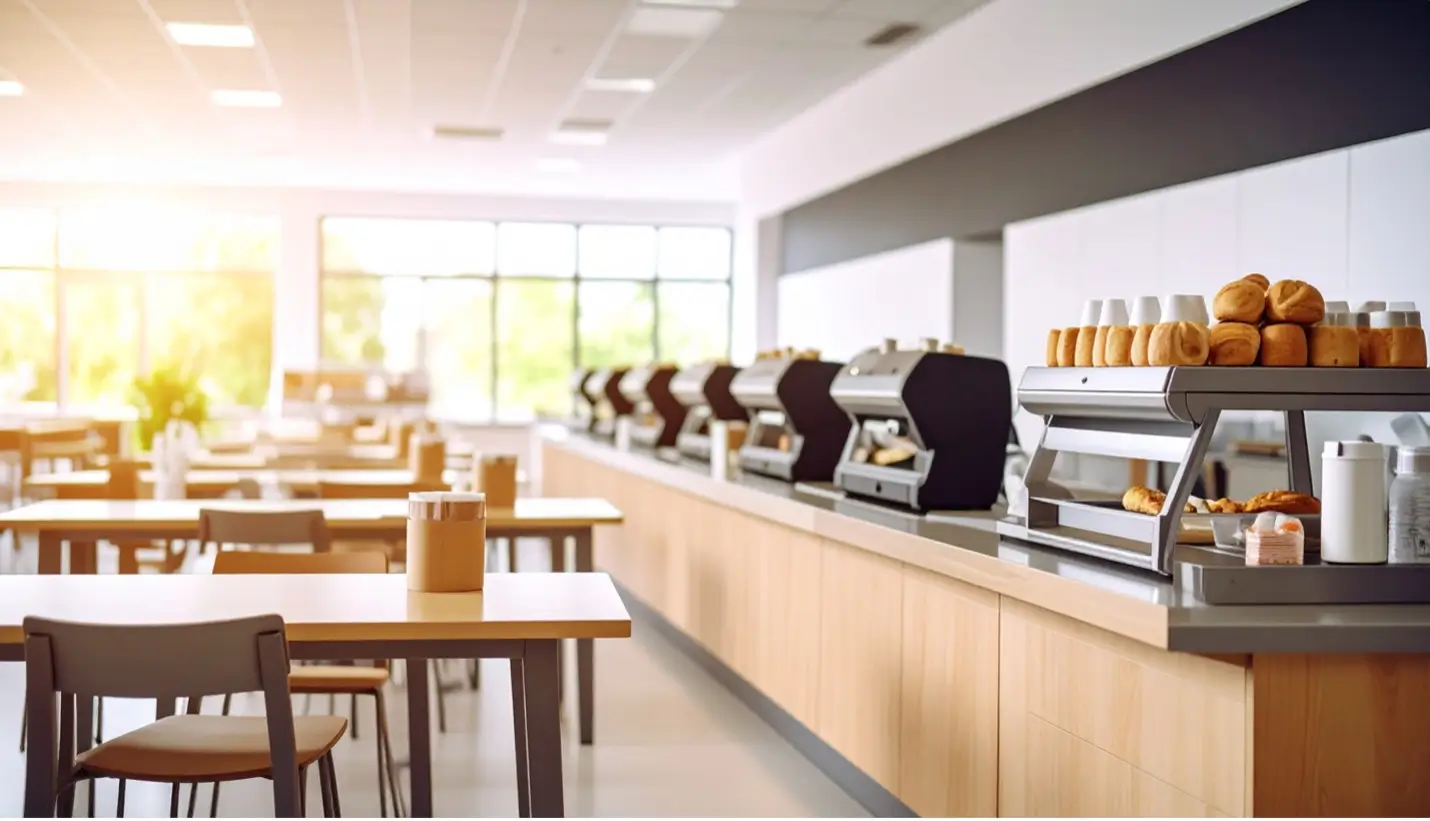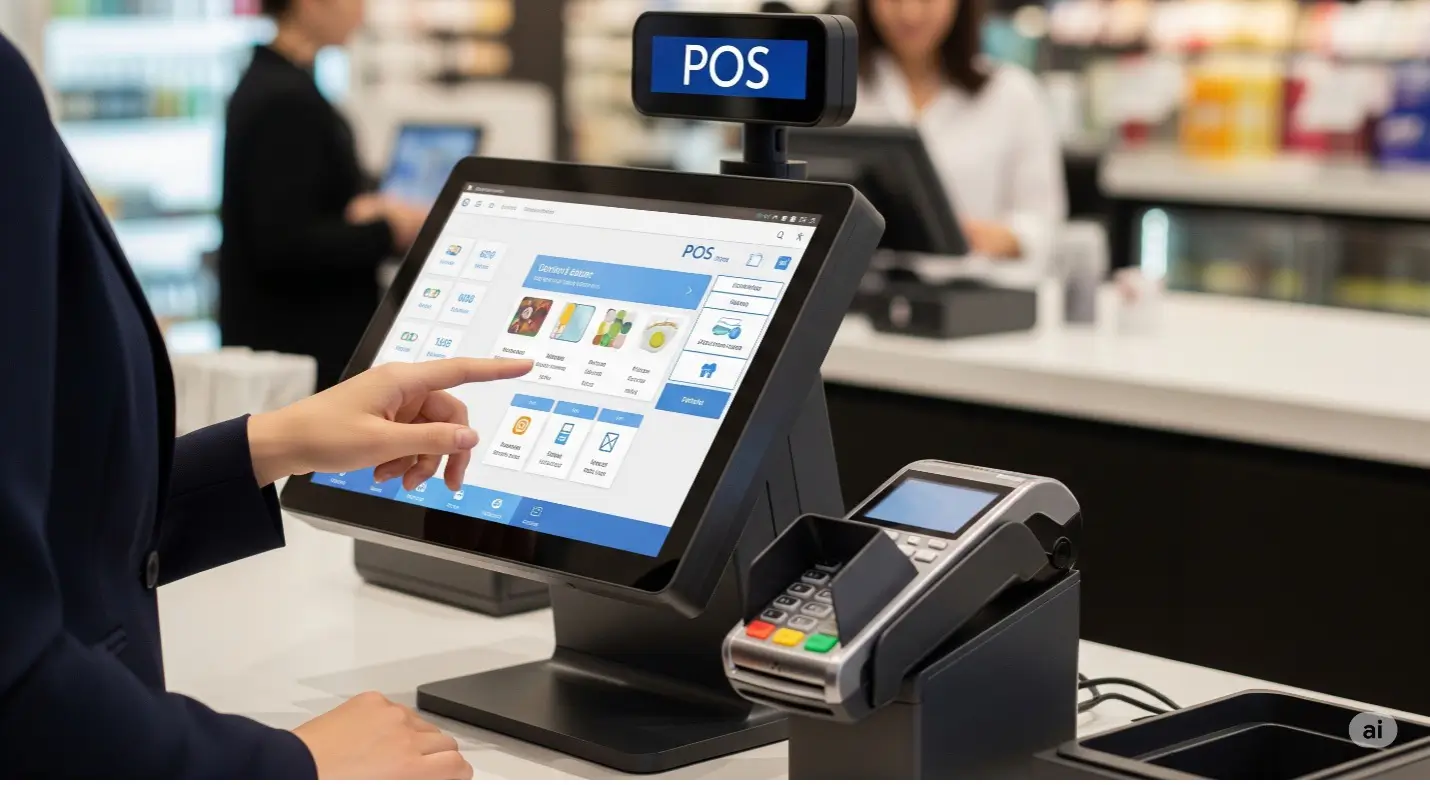
How to Choose the Right POS System for a Small Restaurant: The Complete 2025 Guide
Did you know that 73% of restaurants that implemented modern POS systems saw their revenue increased by at least 15% within the first year? This shocking statistic reveals just how powerful the right point-of-sale system can be for transforming your restaurant business. Yet, many small restaurant owners still struggle with outdated cash registers and manual processes that cost them money every single day.
Choosing the right POS system isn't just about processing payments anymore. It's about creating a complete business management tool that handles everything from inventory tracking to customer loyalty programs. In this comprehensive guide, we'll walk you through everything you need to know to make the best decision for your restaurant.
What Is a POS System – and Why Do You Need One?
A Point of Sale (POS) system is the central hub where your customers make payments and where all your restaurant transactions get processed. Think of it as the digital brain of your restaurant operations. Modern POS systems do much more than just handle credit card payments – they manage your entire business workflow.
Today's restaurant POS systems combine hardware (like tablets, card readers, and receipt printers) with powerful software that tracks sales, manages inventory, handles staff scheduling, and provides detailed business reports. Unlike traditional cash registers, these systems store data in the cloud, making it accessible from anywhere.
- POS Systems Lend Credibility to Your Business
When customers walk into your restaurant and see a modern POS system, they immediately feel more confident about your business. A sleek tablet-based system or professional terminal tells customers that you're serious about security and efficiency.
This credibility boost is especially important for small restaurants competing against larger chains. Modern payment processing shows that you can handle various payment methods securely, including chip cards, mobile payments like Apple Pay, and contactless transactions. Customers expect these options, and not having them can actually hurt your business.
Professional POS systems also reduce the chance of human error during transactions. When customers see accurate receipts and smooth payment processing, they trust your business more. This trust translates into repeat visits and positive reviews.
- POS Systems Make You More Competitive
The restaurant industry moves fast, and staying competitive means keeping up with technology. Restaurants using modern Restaurant POS Solution gain significant advantages over those still using cash registers or basic systems.
Speed is everything in the restaurant business. Modern POS systems process orders faster, split bills easily, and handle complex modifications without confusion. This means shorter wait times for customers and higher table turnover for you.
You can also offer features that customers love, like loyalty programs, online ordering integration, and digital receipts. These features help you compete with larger restaurant chains that already offer these conveniences.
- POS Systems Simplify Sales Tracking and Analysis
Running a restaurant involves tracking hundreds of details every day. Which menu items sell best? What are your peak hours? How much inventory do you have left? A good POS system answers all these questions automatically.
Instead of manually counting cash and receipts at the end of each day, your POS system generates detailed reports instantly. You can see exactly how much you sold, which payment methods customers preferred, and which menu items were most popular.
This data helps you make better business decisions. You might discover that certain items sell better on specific days, allowing you to plan special promotions. Or you might notice that adding extra staff during certain hours would reduce wait times and increase sales.
Finding the Right POS System for Your Needs
Before you start shopping for a POS system, you need to understand your restaurant's specific needs. Every restaurant is different, and the perfect system for a coffee shop might not work well for a full-service restaurant.
What Is the State of Your Business?
Are you just opening your first restaurant, or have you been running one for years? New restaurants have different needs than established ones. If you're just starting out, you might want a simple system that's easy to learn and doesn't require a huge upfront investment.
Established restaurants might need more advanced features like detailed analytics, integration with existing systems, or support for multiple locations. Consider whether you plan to expand in the future – some POS systems work better for single locations, while others are designed to grow with your business.
Think about your restaurant's size and style too. A small coffee shop needs different features than a full-service restaurant with table service. Fast-casual restaurants have different requirements than fine dining establishments.
What Are Your Biggest Struggles?
Every restaurant owner faces specific challenges. Maybe you struggle with inventory management and often run out of popular items. Perhaps tracking employee hours and calculating payroll takes too much time. Or you might have trouble understanding which menu items are profitable.
List your top three business challenges before shopping for a POS system. This helps you focus on systems that solve real problems rather than getting distracted by fancy features you don't need.
Some common restaurant struggles which POS systems can solve include slow service, inventory waste, difficult staff scheduling, poor customer data tracking, and complicated reporting. Understanding your pain points helps you choose a system that will actually improve your business.
What Tasks Can a POS System Help Simplify?
Modern Restaurant POS Systems can automate many time-consuming tasks that restaurant owners typically handle manually. These systems can automatically track inventory levels and alert you when supplies run low. They can integrate with your accounting software to simplify bookkeeping.
Staff management becomes easier with built-in time clocks, schedule management, and payroll integration. Customer relationship management features help you track regular customers and their preferences. Some systems even handle online ordering and delivery management.
Think about which daily tasks take up most of your time. If you spend hours each week on inventory, payroll, or sales reporting, look for POS systems that automate these specific tasks.
Things to Consider When Looking for a POS System
Shopping for a POS system can feel overwhelming with so many options available. Focus on these key factors to make the best choice for your restaurant.
Ease of Use
Your POS system needs to be simple enough that new employees can learn it quickly. Restaurant staff turnover is high, and you don't want to spend days training every new hire on a complicated system.
Look for systems with intuitive interfaces that use clear icons and simple navigation. The best systems feel familiar, like using a smartphone or tablet. Test the system yourself – if you find it confusing during a demo, your staff probably will too.
Consider how the system handles common restaurant tasks like splitting bills, applying discounts, or modifying orders. These should be quick and easy, not require multiple steps or special training.
Hardware
Restaurant POS hardware needs to withstand the demanding environment of a busy kitchen and dining room. Look for equipment that's built for commercial use, not consumer-grade tablets that might break under constant use.
Consider what hardware you actually need. A small cafe might do fine with just a tablet and card reader, while a full-service restaurant might need multiple terminals, kitchen display screens, and receipt printers.
Think about your space limitations too. Some POS systems require large terminals that take up valuable counter space. Others use compact tablets that can be mounted on walls or moved around as needed.
Software
The software is where your POS system's real power lies. Look for Restaurant POS software that handles all your essential business functions, not just payment processing.
Key software features for restaurants include menu management, inventory tracking, employee management, customer database, reporting and analytics, integration capabilities, and cloud-based access.
Make sure the software receives regular updates and improvements. Technology changes quickly, and you want a system that stays current with new features and security requirements.
Automation
The best POS systems automate routine tasks so you can focus on running your restaurant. Look for systems that automatically update inventory when items are sold, generate purchase orders when supplies run low, and create detailed sales reports.
Automation reduces human error and saves time. Instead of manually tracking which items you sold each day, your POS system should do this automatically and alert you to important trends or issues.
Consider which tasks currently take up most of your time, then look for POS systems that can automate those specific processes.
Integration
Your POS system shouldn't work in isolation. It should connect with other tools you use to run your restaurant, like accounting software, payroll systems, online ordering platforms, and inventory management tools.
Ask potential vendors about their integration capabilities. Some systems have built-in connections to popular restaurant tools, while others might require custom programming or third-party solutions.
Good integration saves you time and reduces errors by eliminating duplicate data entry. When your POS system automatically sends sales data to your accounting software, you save hours of manual work each month.
PCI Compliance
Payment security is crucial for any business that accepts credit cards. Your POS system must comply with Payment Card Industry (PCI) standards to protect your customers' payment information and avoid expensive security breaches.
Look for systems that are PCI compliant and offer additional security features like end-to-end encryption and tokenization. These features protect customer data throughout the payment process.
Don't assume all POS systems are equally secure. Ask specifically about security certifications and what measures the company takes to protect payment data.
Support
Even the best POS system will occasionally have issues or require help. Look for providers that offer comprehensive support, including phone support, online chat, email assistance, and detailed documentation.
Consider when you need support most. Many restaurants need help during busy hours, weekends, or holidays. Make sure your POS provider offers support during the times you're most likely to need it.
Ask about training and onboarding support too. The best providers help you set up your system properly and train your staff to use it effectively.
Cost
POS system costs vary widely depending on features, hardware requirements, and ongoing fees. Understand all costs upfront, including hardware purchase or lease fees, monthly software fees, transaction processing fees, and support costs.
Compare total cost of ownership, not just upfront prices. Some systems have low monthly fees but charge high transaction fees. Others might have higher monthly costs but lower processing fees that save money for high-volume restaurants.
Consider the return on investment too. A more expensive system that significantly improves efficiency or increases sales might be worth the extra cost.
Features
Modern POS systems offer dozens of features, but not all of them will be useful for your restaurant. Focus on features that solve your specific business challenges rather than getting caught up in impressive-sounding capabilities you'll never use.
Essential restaurant features include menu management with customizable options, table management for full-service restaurants, inventory tracking and alerts, employee time tracking and scheduling, detailed sales reporting, customer management and loyalty programs, and integration with online ordering platforms.
Advanced features might include kitchen display systems, advanced analytics and forecasting, multi-location management, and extensive customization options.
The Company
You're not just buying software – you're entering into a long-term relationship with a POS provider. Research the company's reputation, financial stability, and track record with restaurant customers.
Look for providers that specialize in restaurants rather than general retailers. Restaurant-specific providers understand your unique needs and challenges better than companies that serve all types of businesses.
Read reviews from other restaurant owners and ask for references from similar businesses. A company might have great technology but poor customer service, or vice versa.
Picking the Best POS System for Your Business
Now that you understand what to look for, it's time to narrow down your options and make a final decision.
Type of Business Determines Type of POS System
Different types of restaurants need different POS capabilities. Quick-service restaurants need fast order processing and drive-through integration. Full-service restaurants need table management and complex bill-splitting capabilities.
- Coffee shops and cafes benefit from systems that handle high-volume, low-cost transactions quickly. They might also need loyalty program integration to encourage repeat visits.
- Fine dining restaurants need systems that can handle complex orders, wine pairings, and detailed customer preferences. They might also need integration with reservation systems.
- Food trucks and mobile restaurants need portable systems that work reliably without internet connections and can handle outdoor conditions.
What's Your Budget?
Be realistic about what you can afford both upfront and on an ongoing basis. Remember that your POS system is an investment that should pay for itself through improved efficiency and increased sales.
Consider financing options if needed. Many POS providers offer leasing or payment plans that spread costs over time. This can make more advanced systems affordable for small restaurants.
Don't choose the cheapest option if it doesn't meet your needs. A system that's missing essential features will cost you more in the long run through lost efficiency and missed opportunities.
Can You Scale Your Business Easily
Think about your growth plans when choosing a POS system. If you plan to add locations, make sure your system can handle multiple restaurants from a single dashboard.
Some systems charge per location or per terminal, which can get expensive as you grow. Others offer unlimited locations for a fixed monthly fee.
Consider whether you might need additional features in the future, like advanced reporting, kitchen display systems, or integration with new tools. It's easier to choose a system that can grow with you than to switch systems later.
Get References from Other Businesses
Talk to other restaurant owners about their POS systems. What do they like and dislike? Would they choose the same system again? Have they had any major problems?
Ask the POS companies for references from restaurants similar to yours. A system that works great for a pizza shop might not be ideal for a fine dining restaurant.
Join local restaurant associations or online forums where you can get honest feedback from other business owners who have no reason to mislead you.
Get a Trial or Demo of the POS System
Never buy a POS system without trying it first. Most reputable providers offer free trials or detailed demos that let you test the system with your actual menu and processes.
During your trial, have your staff use the system to process real orders. Pay attention to how quickly they learn it and whether they encounter any confusion or difficulties.
Test the system during busy periods to see how it performs under pressure. A system that works fine during slow times might have problems when your restaurant gets busy.
Optimizing Your POS System for Maximum Business Growth
Once you've chosen and implemented your POS system, focus on getting the most value from your investment.
Business Insights
Your POS system collects valuable data about your restaurant's performance. Learn to use this data to make better business decisions.
Study your sales reports to identify your most profitable menu items, busiest times, and seasonal trends. Use this information to adjust your menu, staffing, and marketing strategies.
Track customer data to understand your regular customers' preferences and spending patterns. This helps you create targeted promotions and improve customer service.
Monitor employee performance data to identify your best staff members and areas where additional training might help.
Discover Apps and Add-ons
Most modern POS systems offer app marketplaces with additional features you can add as your business grows. These might include accounting integration, loyalty programs, online ordering, inventory management, payroll integration, and marketing tools.
Start with essential apps and add more as you become comfortable with your system. Don't try to implement everything at once – it's better to master basic features first.
Regularly check for new apps that might solve problems you're experiencing or add capabilities that could help grow your business.
Let Us Help You Find the Right POS System for You
Choosing the right POS system is one of the most important decisions you'll make for your restaurant. The right system will streamline your operations, increase your profits, and help you provide better customer service.
Take your time to evaluate options carefully. Consider your specific needs, budget, and growth plans. Don't be afraid to ask questions and demand demonstrations that show how the system will work in your actual restaurant environment.
Remember that the cheapest option isn't always the best value, and the most expensive system isn't necessarily the right choice either. Focus on finding a system that solves your specific challenges and helps you achieve your business goals.
If you're looking for a restaurant POS system that combines powerful features with ease of use, consider CanteenPOS. Our system is designed specifically for restaurants and offers everything you need to run your business efficiently while providing excellent customer service.
Frequently Asked Questions
How much should I expect to spend on a restaurant POS system?
Modern Restaurant POS systems typically cost between $50-200 per month for software, and work on your existing hardware like mobile or tablets. Some providers also charge processing fees usually range from 2.3-3.5% per transaction. Your total cost depends on your restaurant size, features needed, and transaction volume.
Can I use my existing tablet or computer with a new POS system?
Some POS systems work with existing devices, but restaurant environments are demanding. Consumer tablets may not withstand constant use, spills, and heat. Commercial-grade hardware is recommended for reliability and durability.
How long does it take to implement a new POS system?
Basic setup usually takes 1-3 days, but full implementation including staff training and menu setup can take 1-2 weeks. Complex restaurants with multiple locations or extensive customization may need longer.
What happens if my internet connection goes down?
Most modern POS systems have offline modes that let you continue processing orders and payments. Transactions sync automatically when internet connection is restored. Look for systems with robust offline capabilities.
Do I need different POS systems for different restaurant types?
While many systems work for multiple restaurant types, specialized systems often work better. Quick-service restaurants benefit from speed-focused systems, while full-service restaurants need table management features.
Can I switch POS systems later if I'm not satisfied?
Yes, but switching can be disruptive and expensive. You may need to re-enter menu data, retrain staff, and potentially purchase new hardware. Choose carefully the first time to avoid switching costs.
How important is cloud-based vs. local POS systems?
Cloud-based systems offer automatic updates, remote access, and better data backup. Local systems might work better in areas with unreliable internet. Most modern restaurants benefit from cloud-based systems.
Should I buy or lease POS hardware?
Leasing spreads costs over time and often includes upgrades and support. Buying gives you ownership but requires upfront investment. Consider your cash flow and how quickly technology becomes outdated.
What security features should I look for in a POS system?
Essential security features include PCI compliance, end-to-end encryption, tokenization, secure user authentication, regular security updates, and data backup. Never compromise on payment security.
How do I train my staff on a new POS system?
Start with management training, then train staff in small groups. Use the system's training mode if available. Focus on common tasks first, then advanced features. Most staff can learn basic functions within a few hours with proper training.
Ready to move to Cloud POS Solution? CanteenPOS offers cloud based solution with high level of security of your data and comprehensive solutions to manage your business for higher revenues and cost savings.


